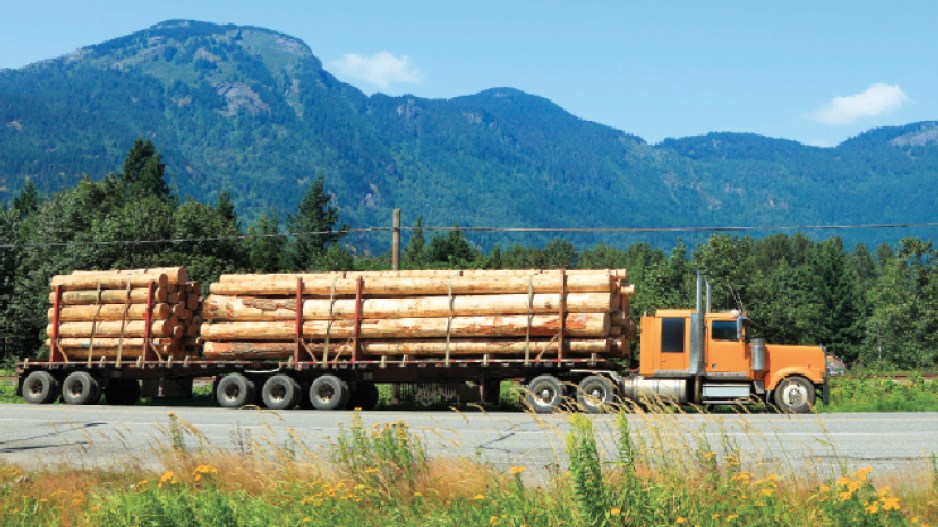revenue could be on its way for Northern Interior sawmills and loggers if more than one of B.C.’s mega-sized energy projects gets built.
In the wake of the mountain pine beetle epidemic, the Northern Interior faces a steep decline in the allowable annual cut (AAC), which sets the amount of timber that forest companies can harvest from Crown land.
The province raised the AAC dramatically in the last decade to combat the mountain pine beetle epidemic.
Now that the mills have chewed through most of the merchantable beetle kill, the AAC is forecast to drop 20% or more in parts of the Interior, which could mean further mill closures and job losses.
But information is becoming available that shows that significant amounts of additional logging could occur if one or more of B.C.’s energy projects get the go-ahead.
Spectra Energy’s (NYSE:SE) Westcoast Connector Gas Transmission Project, an 850-kilometre pipeline that would supply natural gas to BG Group’s proposed LNG terminal in Prince Rupert, would need to harvest more than 800,000 cubic metres of timber to clear a right-of-way across the Northern Interior.
The lion’s share of that timber would be coniferous and would be harvested, in some locations, close to active sawmills that face AAC reductions.
Similarly, TransCanada’s (TSX:TRP) Coastal GasLink pipeline project would need to harvest approximately 540,000 cubic metres of timber in the Northern Interior, of which the company estimates 80% could be sold to mills.
In June, BC Hydro issued a request for proposal (RFP) for clearing work related to its $7.9 billion Site C hydroelectric project.
The early clearing work amounts to 77,000 cubic metres of merchantable timber that can be sold to Peace region sawmills.
That’s not a lot of timber by industry standards, but the entire Site C project would require 2.6 million cubic metres of timber to be logged to make way for reservoir and construction areas.
By comparison, the AAC for the Prince George timber supply area (TSA) is 12.5 million cubic metres, though less than 10 million cubic metres was harvested annually between 2007 and 2011.
As well, the Prince George TSA’s AAC is expected to decline to 6.4 million cubic metres in the mid-term.
Approximately 1.4 million cubic metres of the timber harvested for the Site C project could be sold to mills.
BC Hydro is careful to point out in the RFP that 1.4 million cubic metres represents less than half of the forest industry’s current annual consumption in the Peace region, but certainly it means noticeably more volume for mills in areas facing AAC reductions.
It would also mean a boost for logging and contractor jobs in parts of the Peace that are struggling with job losses due to coal mine closures, notably Tumbler Ridge and Chetwynd.
No doubt the pressure will be on industry to send as much timber to the mills as possible, especially following public concerns in 2012 after BC Hydro burned most of the timber harvested to make way for the Northwest Transmission Line.
There are at least four major pipeline projects proposed for the Northern Interior and, given the province’s geographic complexities, none of them will be easy to build.
On top of that, two companies, Canfor (TSX:CFP) and West Fraser (TSX:WFT), own most of northern B.C.’s remaining sawmill capacity, which means the energy companies would be smart to develop relationships with them now if they want to avoid being price-takers later.
Similarly, there are relatively few logging companies with the manpower, equipment and expertise to navigate the complexity of B.C.’s northern wilderness.
Most of them have established relationships and contracts with the sawmills.
For the energy companies, now would be the time to find out what additional capacity the loggers have in the coming years.
Wherever possible, the energy companies should use well-established B.C. logging companies that not only know the landscape, but also have existing relationships with First Nations in areas where rights-of-way for pipelines will need to be cleared.
All of this depends on which pipeline projects get built and what their final routes become. There is always a point at which it becomes unprofitable to truck timber out of the bush to the mills.
A case in point is the Northwest Transmission Line. There simply weren’t any mills left in the northwest to absorb timber from the project – even if it could be trucked out economically.
If construction on Site C and the pipeline projects happens at the right time, it could help transition the forestry sector into a mid-term supply market that’s not the timber feast of the beetle-kill days. •




